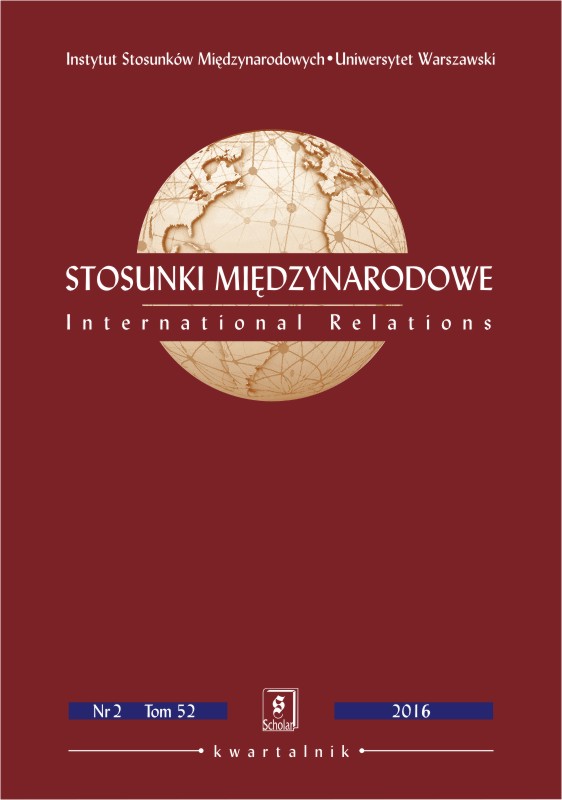Analiza polityki zagranicznej państw Ameryki Łacińskiej i Karaibów (I)
AN ANALYSIS OF THE FOREIGN POLICY OF LATIN AMERICAN AND CARIBBEAN COUNTRIES (PART 1)
Author(s): Marcin Florian GawryckiSubject(s): Politics / Political Sciences, Politics, Political Theory, Political Sciences, International relations/trade
Published by: Wydawnictwo Naukowe Scholar Sp. z o.o.
Keywords: foreign policy; Latin America; Caribbean
Summary/Abstract: The article proposes a method for analysing the foreign policy of Latin Americathrough identification of certain common features of the entire region and elementscharacteristic of each Latin American country. There are certain risks involved inthis kind of analysis. On the one hand, the countries of the region share certaincommon traits (language, culture, religion, historical heritage), which encouragesgeneralisations, but on the other hand, this gives rise to numerous risks of overinterpretationin drawing conclusions. Jeanne Hey, however, lists five factorswhich, in her opinion, weigh in favour of performing a combined analysis of theforeign policies of the countries of the region: (1) Latin America and the Caribbean were the target of European colonial expansion; although most Latin Americancountries secured their independence in the early 19th century whereas Caribbeancountries followed suit only in the second half of the 20th century, they still sharethe experience of struggling against neo-colonialism; (2) the economies of mostcountries of the region have a relatively weak position in the global market andremain dependent on exports, mainly of necessity goods, despite many attempts tochange that state of affairs; (3) the countries have developed a specific hierarchicalsocial model where descendants of European colonisers are at the top of the socialladder and all the other citizens are at the bottom; (4) all countries of the regionneed to take into account the hegemonic pressure of the United States in conductingtheir foreign policies (albeit it manifests itself differently in Central America and theCaribbean than it does in South America); and finally, (5) the abundant literatureconcerning this part of the world proves the existence of a multitude of interrelationsand interdependencies in the region. On this basis, the author analyses the foreignpolicies of selected Latin American and Caribbean countries.
Journal: Stosunki Międzynarodowe
- Issue Year: 52/2016
- Issue No: 2
- Page Range: 123-142
- Page Count: 19
- Language: Polish

